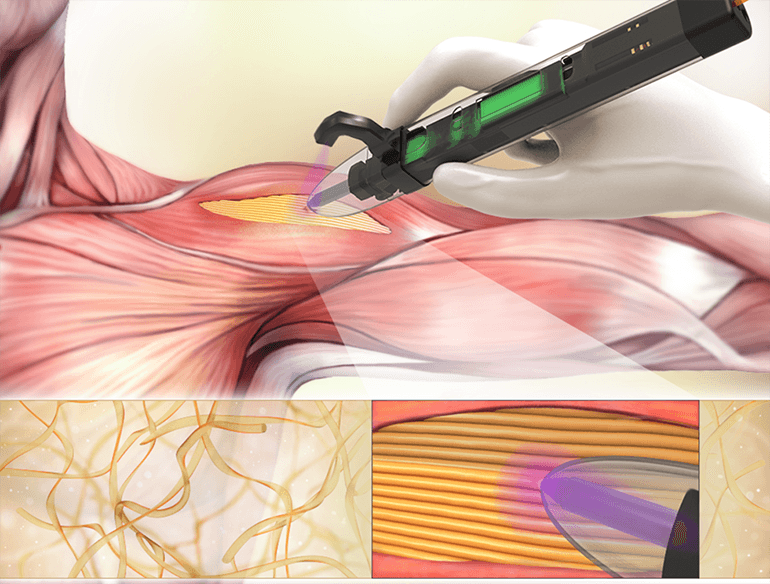3D printing of artificial scaffolds intended to replace injured tissues has become a ballyhooed technology that’s yet to prove itself in clinical practice. One issue that complicates things is that the scaffolds have to match the volume that they’ll be replacing, in both shape and the direction in which cells will have to grow. To do this, 3D models have to be created of the area to be treated and they have to intimately match each patient’s anatomy.
Bypassing all this, researchers at the University of Connecticut have developed a bioprinter that deposits a biocompatible fibrous scaffold directly where it is expected to remain. The technology is particularly beneficial for addressing volumetric muscle loss for which there aren’t good options these days.
The approach doesn’t require any suturing to deposit the printable gel that serves as the matrix within which new cells can proliferate and grow. The gel is naturally adhesive to wound tissue and stays stuck where it is placed. Because the approach doesn’t require modeling and printing of the scaffold outside the patient, it may allow for very quick deposition and rapid treatment of acute wounds.
So far the new gel and bioprinter combo have been tried in mice with volumetric muscle loss injuries and the material adhered to the nearby tissues and helped speed up skeletal muscle growth.
Story Source:
Medgadget. Note: Content may be edited for style and length.

